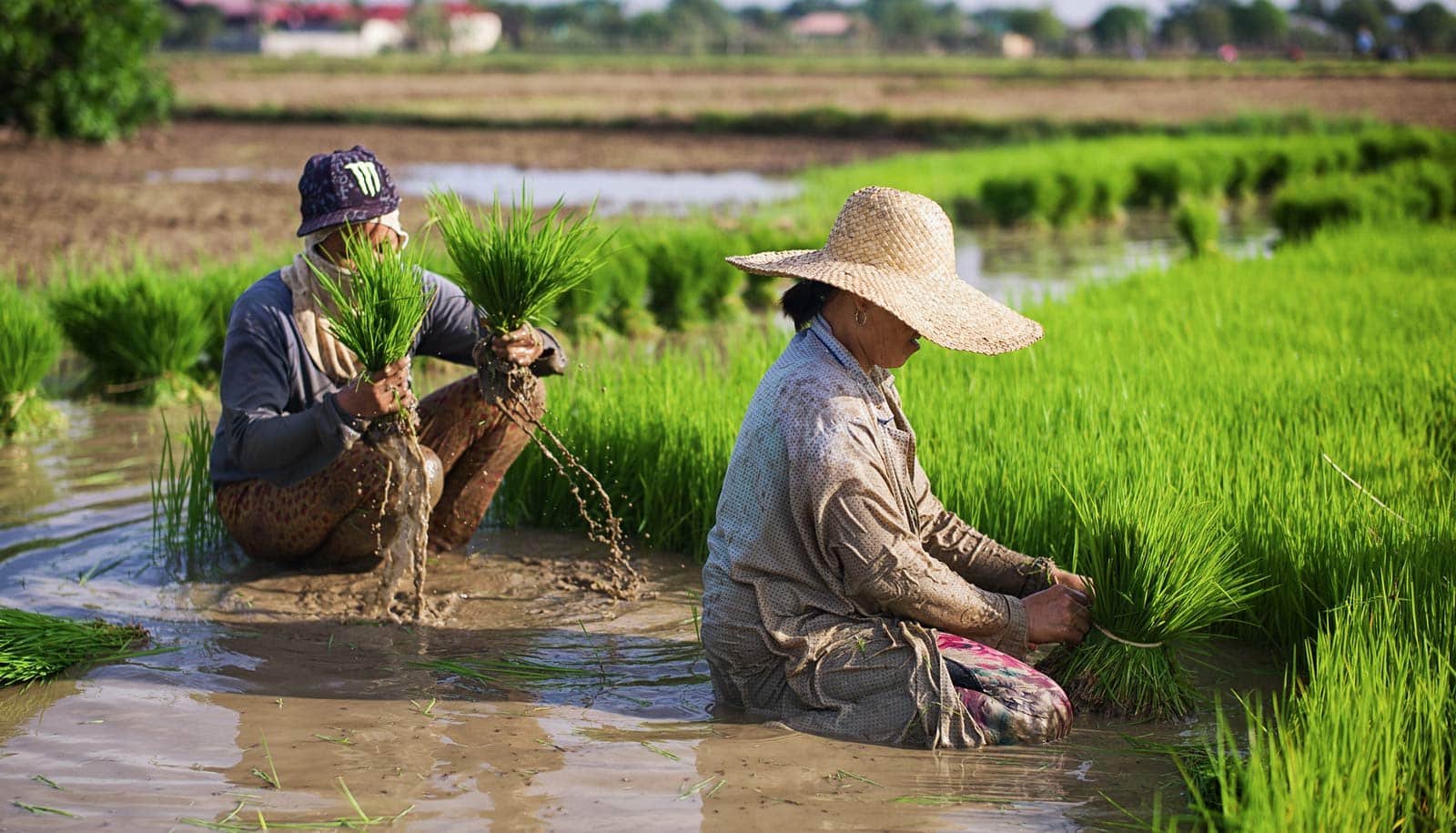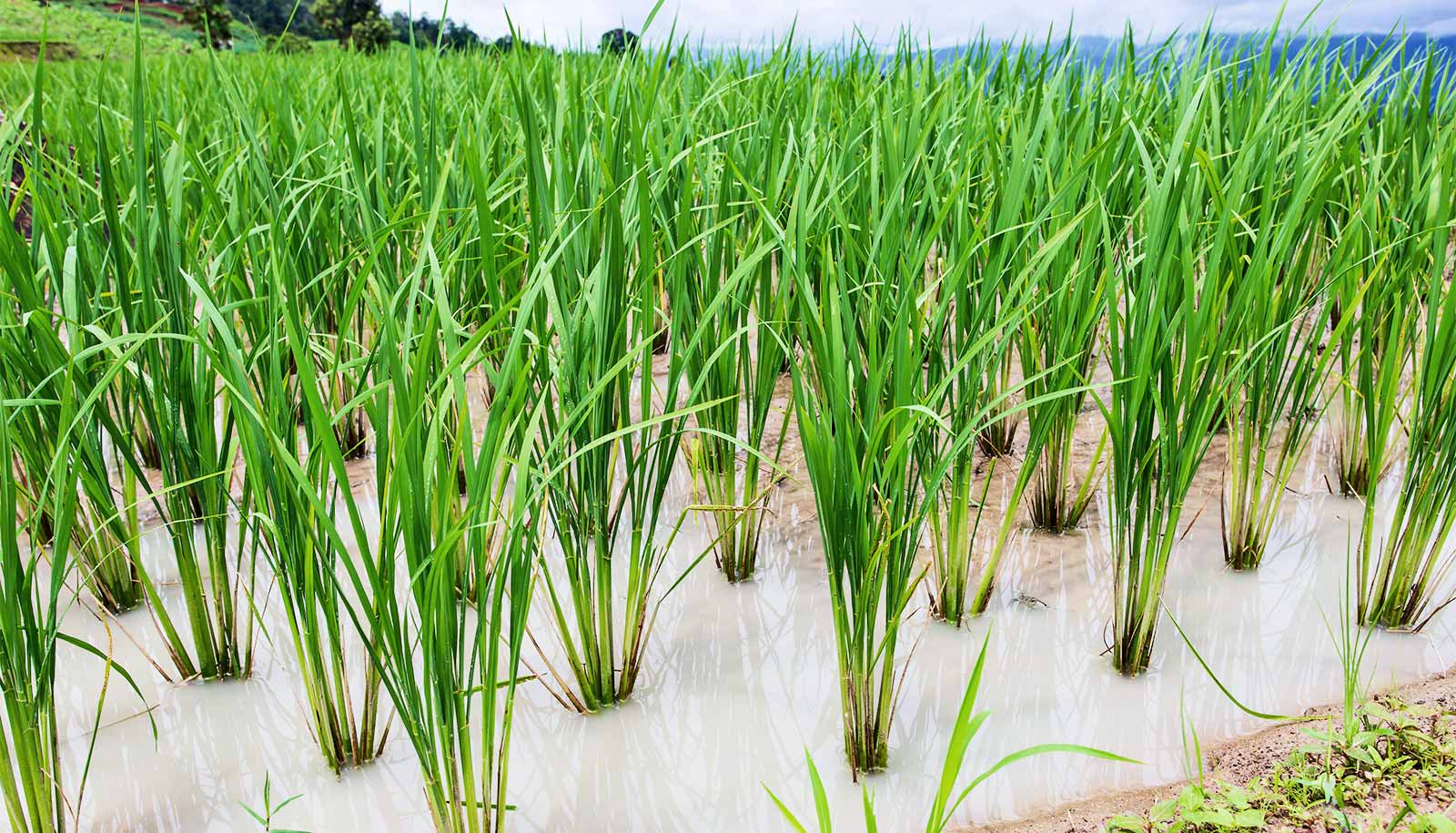New research clarifies how hot nights are curbing crop yields for rice.
“Essentially, we found that warmer nights throw the rice plant’s internal clock out of whack,” says Colleen Doherty, an associate professor of biochemistry at North Carolina State University and corresponding author of a paper on the work in the journal PNAS.
“Most people think plants aren’t dynamic, but they are. Plants are constantly regulating their biological processes—gearing up for photosynthesis just before dawn, winding that down in the late afternoon, determining precisely how and where to burn their energy resources. Plants are busy, it’s just difficult to observe all that activity from the outside.”
And what researchers have learned is that the clock responsible for regulating all of that activity gets messed up when the nights get hotter relative to the days.
“This isn’t just an interesting scientific question, it’s a global food security issue.”
“We already knew that climate change is leading to increased temperatures globally, and that nighttime temperatures are rising faster than daytime temperatures,” Doherty says. “We also knew that warmer nights hurt rice production. But until now, we had very little insight into why warmer nights are bad for rice.
“We still don’t know all the details, but we’re narrowing down where to look.”
Research that addresses rice yield losses is important because rice is an essential crop for feeding hundreds of millions of people each year—and because a changing climate poses challenges for global food security.
To better understand how warm nights affects rice, Doherty worked with colleagues, including Krishna Jagadish of Kansas State University and Lovely Lawas of the International Rice Research Institute, to study the problem in the field. The researchers established two study sites in the Philippines. They used ceramic heaters or heat tends to manipulate temperatures in different areas of each study site.
A research team that Jagadish led used the ceramic heaters to maintain experimental plots at 2 degrees Celsius (3.6 degrees Fahrenheit) above the ambient temperature, and took samples from the rice plants every three hours for 24 hours. Control plots were not heated, but were also sampled every three hours during the same 24-hour period. The team repeated these tests four times. They later used the heat tents to validate the results from the ceramic heater tests.
Meanwhile, a team that Doherty led found that more than a thousand genes were being expressed at the “wrong” time when nighttime temperatures were higher. Specifically, hotter nights resulted in hundreds of genes—including many associated with photosynthesis—becoming active later in the day. Meanwhile, hundreds of other genes were becoming active much earlier in the evening than normal, disrupting the finely tuned timing necessary for optimal yield.
“It’s not clear what all of these genes do, but it is clear that these conflicting schedule shifts are not good for the plant,” Doherty says.
The researchers found that many of the affected genes are regulated by 24 other genes, called transcription factors. Of those 24, four of the transcription factors were deemed most promising for future study.
“We need to do additional work to figure out exactly what’s happening here, so that we can begin breeding rice that’s resilient against warmer nights,” Doherty says. “Rice is an important food crop. And other staple crops are also affected by hotter nights—including wheat. This isn’t just an interesting scientific question, it’s a global food security issue.”
The work took place with support from the US Department of Agriculture under a National Institute of Food and Agriculture grant.
Source: NC State



